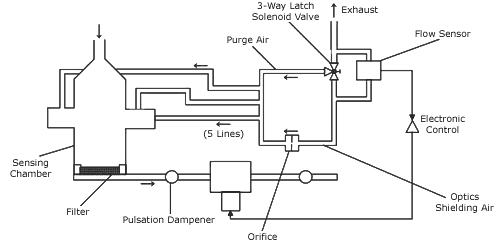Introduction to Dust Monitors
Used to measure mass concentrations of dust, smoke, mists, and fumes in real time, Thermo Electron dust monitors are widely recognized for their reliability, sensitivity, and long-term stability. The area monitoring DR-2000/DR-4000 and the personal monitoring pDR-1000AN/pDR-1200 are equipped with onboard datalogging which automatically tags and time stamps the data collected. The data is stored for subsequent retrieval, printing, or graphing through a computer. These instruments can respond particles in the size range of 0.1 to 10 µm and have a measurement range from 0.001 to 400 mg/m³. They are used in a wide variety of applications such as:
- Hazardous waste excavations
- Construction sites
- Demolition sites
- Mining
- Asbestos abatement
- Cement and gravel plants
How Does a Dust Monitor Work?
The pDR series instruments are light scattering photometers (i.e, nephelometers) incorporating a pulse, high output, near-infrared light emitting diode source, a silicon detector/hybrid preampliifer, and collimating optics and a source reference feedback PIN silicon detector. The intensity of the light scattered over the forward angle of 50° to 90° by airborne particles passing throught the sensing chamber is linearly proportional to their concentration. This optical configuration produces optimal response to particles in the size range of 0.1 to 10.0 µm, achieving high correlation with standard gravimetric measurements of the respirable and thoracic fractions. The DR-4000 has a patented two-wavelength particle detection system that provides the volume median particle diameter of the sampled aerosol, over a concentration range of up to 400 mg/m³. Unlike typical particle counting devices, the DR-4000 is totally immune to particle coincidence errors, even at the highest concentrations. Volume median particle sizes down to 0.05 µm can be measured by this unique spectral nephelometric technique. The DR-4000 measures the scattering coefficient at two wavelengths (in units of inverse megameters) and computes the coefficient at the reference wavelength of 550 nanometers, as well as the angstrom exponent (a measure of atmospheric fine particle size). Based on the 550 nm scattering coefficient, the instrument then calculates the visual range in kilometers.
Active Sampling DataRAM

